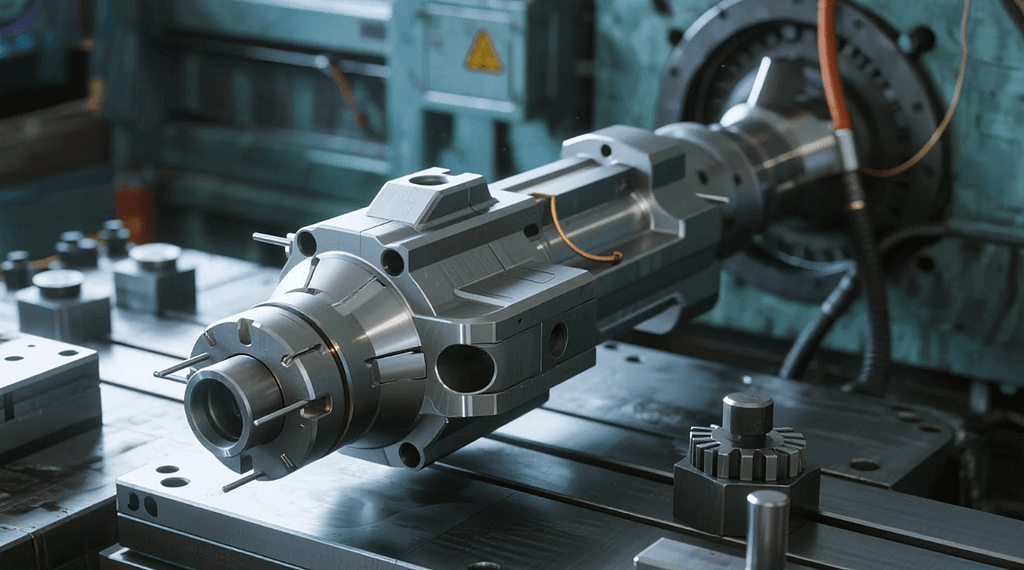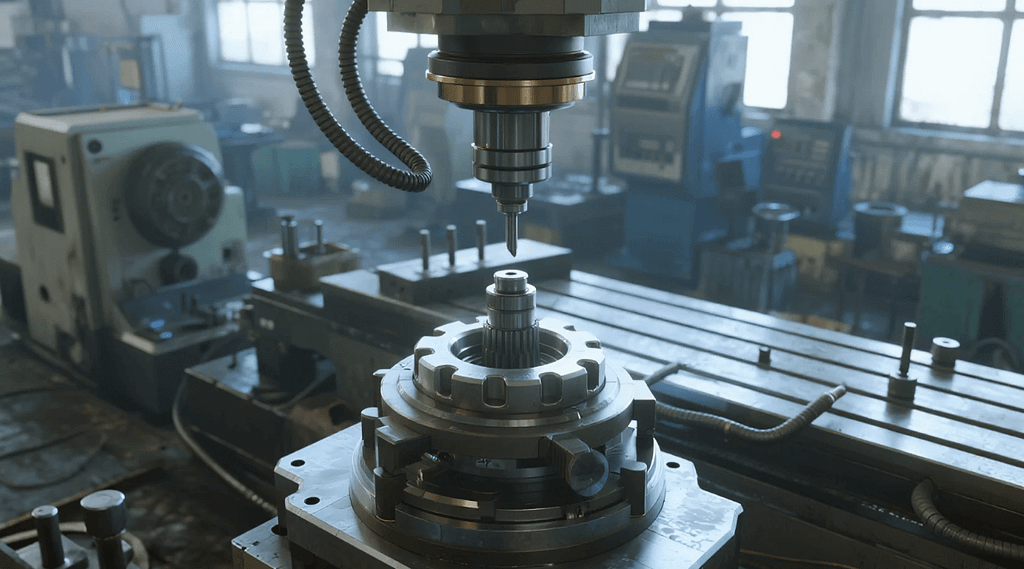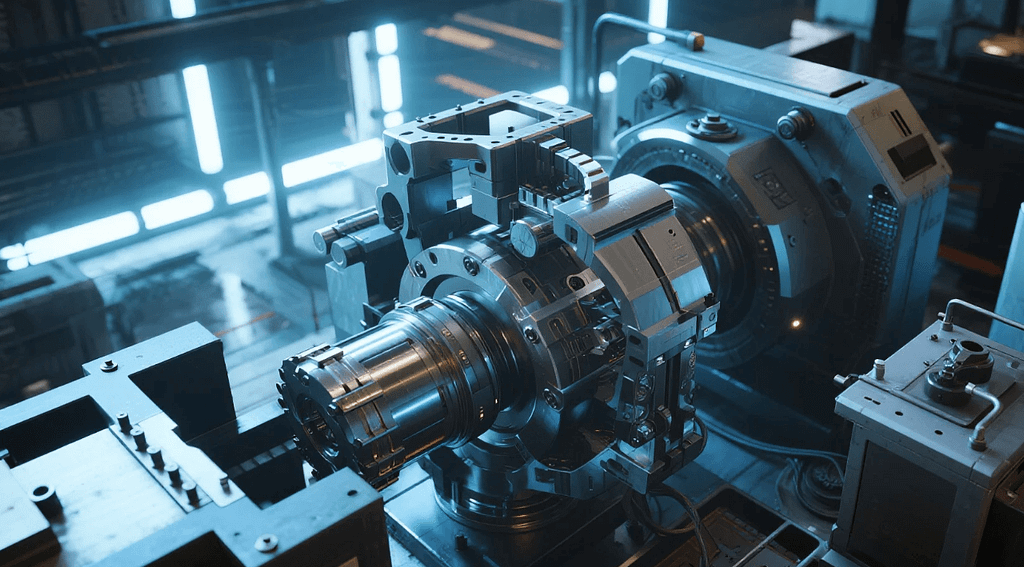In the highly demanding and safety-critical aerospace industry, every component, from a tiny sensor housing to a large structural frame, must meet incredibly stringent specifications. At the heart of achieving this precision and reliability lies CNC machining for aerospace, a cornerstone technology that enables the production of complex, high-performance parts. This article explores the vital role of Computer Numerical Control (CNC) machining within the aerospace sector, highlighting its unique advantages and its indispensable contribution to the creation of advanced industrial models. For companies seeking cutting-edge solutions for aerospace components or their prototypes, understanding the capabilities of CNC machining for aerospace is crucial for unlocking innovation and ensuring mission-critical success.
The Indispensable Role of CNC Machining for Aerospace

The aerospace industry operates under zero-failure tolerance, where performance, weight, and reliability are paramount. Deviations of even a few microns can have catastrophic consequences. This is precisely where CNC machining for aerospace proves invaluable. Unlike traditional manufacturing methods, CNC machines are automated, computer-controlled tools that execute complex designs with unparalleled precision and repeatability. This automation minimizes human error, leading to consistently high-quality components essential for aircraft, spacecraft, and satellite systems.
Unrivaled Precision for Critical Components
The ability of CNC machines to achieve micron-level accuracy is non-negotiable in aerospace. Consider an aircraft engine component, where precise airflow channels and tight clearances are critical for fuel efficiency and thrust. Similarly, a satellite’s optical mounting bracket requires exact dimensions to ensure accurate alignment and functionality in orbit.
CNC machining for aerospace excels in these areas due to its closed-loop control systems. These systems continuously monitor the cutting process, making real-time adjustments to maintain accuracy even with challenging materials. Furthermore, advanced multi-axis CNC machines can work with a wide range of high-performance aerospace materials, including titanium, aluminum alloys, superalloys like Inconel, and various composites. These materials are chosen for their exceptional strength-to-weight ratios, temperature resistance, and durability under extreme conditions.
Enabling Complex Geometries and Lightweight Designs
Modern aerospace designs often feature incredibly complex geometries, from organic shapes optimized for aerodynamics to intricate internal structures designed for lightweighting. These designs would be nearly impossible to achieve with conventional manufacturing methods. CNC machining for aerospace overcomes these challenges by precisely carving out even the most intricate shapes, including thin walls, deep pockets, and complex contours. The ability to create these complex features directly translates to lighter, stronger, and more efficient aerospace components, directly impacting fuel consumption and payload capacity.
Speed and Efficiency in Production
Beyond precision and complexity, the speed and efficiency offered by CNC machining for aerospace are significant advantages. Once a design is programmed, the machine can produce multiple identical parts quickly and consistently. This is crucial for scaling up production to meet the demands of aerospace manufacturing, especially for high-volume components or highly specialized parts. The automated nature of CNC also reduces labor costs and streamlines the manufacturing process, contributing to a more cost-effective production model without compromising quality.
Material Versatility and Optimal Performance
Aerospace components must withstand extreme conditions, from cryogenic temperatures in space to high-heat environments within jet engines. CNC machining for aerospace handles a diverse range of specialized materials, ensuring optimal performance for each application. For instance, titanium is favored for its high strength-to-weight ratio and corrosion resistance, while superalloys are used for their ability to maintain strength at extreme temperatures. CNC machines are specifically configured with the power, tooling, and coolant systems necessary to effectively machine these tough, often difficult-to-work-with, materials.
The Focus on Precision Industrial Models in Aerospace

For companies providing precision industrial model services, CNC machining for aerospace represents a core competency. These models are not just aesthetic representations; they are functional prototypes and verification tools that are absolutely essential at various stages of aerospace product development.
From Concept to Reality: Validating Aerodynamic and Structural Designs
Precision industrial models created through CNC machining for aerospace serve as tangible representations of digital designs. Engineers and designers can physically examine and test these models to validate critical aspects like aerodynamic flow, structural integrity, and component fit. For example, a scale model of a new wing section can be precisely machined for wind tunnel testing, allowing for early validation of aerodynamic performance. Similarly, a prototype of a structural bracket can undergo stress testing to confirm its load-bearing capabilities. This physical validation is crucial for identifying and mitigating risks early in the design cycle.
Ensuring Form, Fit, and Assembly Verification
Aerospace systems are often complex assemblies of many interlocking parts. Precision industrial models enable rigorous verification of how these components fit together and interact. A precisely machined model of an engine casing, for instance, allows engineers to confirm clearances, mounting points, and the overall assembly process before committing to expensive production tooling. This proactive approach helps to avoid costly redesigns and assembly issues later in the manufacturing process.
Ergonomics and Maintainability Assessment
Beyond performance, the maintainability and ergonomics of aerospace systems are vital for operational efficiency and safety. Precision industrial models allow for hands-on evaluation of these factors by technicians and maintenance crews. Feedback on accessibility, ease of component replacement, and user comfort can lead to design improvements that enhance usability and reduce maintenance downtime. A service leveraging CNC machining for aerospace can produce models with the exact dimensions and tactile properties necessary for realistic ergonomic assessments.
Accelerating Certification and Regulatory Compliance
Before new aircraft or spacecraft components can be used, they must undergo extensive certification and regulatory approval processes. Precision industrial models created with CNC machining for aerospace can be used for initial functional testing, environmental testing, and even some non-destructive evaluations to gather preliminary data. While not always the final flight-ready part, these models provide valuable data that informs the final design and helps to demonstrate compliance with rigorous industry standards suchates like AS9100. This proactive approach significantly streamlines the approval process and minimizes costly redesigns later in the development cycle.
Ethical Considerations and Future Outlook in Aerospace Machining
The ethical implications surrounding aerospace manufacturing are profound, directly impacting public safety and global security. The unwavering commitment to precision, quality, and rigorous testing in CNC machining for aerospace directly translates into safer air travel and reliable space exploration. The industry is constantly evolving, with new lightweight materials, advanced simulation software, and more sophisticated multi-axis CNC technologies emerging. Looking ahead, we can anticipate even greater levels of automation, integration with artificial intelligence for optimized design and production, and the development of entirely new types of aerospace components made possible by continuous advancements in CNC machining. The responsible application of this technology, prioritizing safety and reliability, will continue to be critical for the ethical and effective advancement of aerospace.
Conclusión
CNC machining for aerospace is far more than just a manufacturing technique; it is a critical enabler of innovation, precision, and safety in the aerospace industry. Its unparalleled accuracy, efficiency, and ability to create complex geometries have made it indispensable for developing everything from structural airframe components to intricate engine parts. For precision industrial model service providers, specializing in this domain offers a unique opportunity to partner with aerospace innovators, transforming digital designs into tangible realities that pave the way for safer, more efficient, and more capable air and space vehicles. The continuous evolution of CNC technology promises to unlock even more possibilities, further cementing its role at the forefront of aerospace advancement.
PREGUNTAS FRECUENTES
Q1: Why is precision CNC machining so crucial for aerospace components?
A1: Precision CNC machining for aerospace is crucial due to the industry’s zero-failure tolerance. It ensures components meet incredibly tight tolerances and have superior surface finishes, which are vital for safety, performance, and reliability in extreme operating conditions.
Q2: What types of materials are commonly machined for aerospace applications?
A2: Common materials include high-strength aluminum alloys (e.g., 7075, 2024), various grades of titanium (e.g., Ti-6Al-4V), high-temperature superalloys (e.g., Inconel, Waspaloy), and advanced composites.
Q3: How do multi-axis CNC machines benefit aerospace manufacturing?
Q3: Multi-axis (e.g., 5-axis) CNC machines allow for the creation of complex geometries, thin walls, and intricate internal structures in a single setup, reducing the need for multiple fixturing and improving overall accuracy and efficiency crucial for aerospace parts.
Q4: Can CNC machining be used for prototyping aerospace components?
Q4: Absolutely. CNC machining for aerospace is extensively used for rapid prototyping of components and systems. It enables manufacturers to quickly produce functional models for testing, validation, and regulatory submission, significantly accelerating the design and development cycle.
Q5: What unique challenges does CNC machining face in the aerospace industry?
Q5: Challenges include machining difficult-to-work-with aerospace-grade materials (like titanium and superalloys), maintaining extremely tight tolerances across large parts, ensuring strict material traceability, and adhering to rigorous quality control and certification standards (e.g., AS9100).
Q6: What role do precision industrial models play in aerospace product development?
Q6: Precision industrial models are vital for validating aerodynamic and structural designs, confirming form, fit, and assembly, assessing ergonomics and maintainability, and gathering preliminary data for certification and regulatory compliance.
Q7: How does CNC machining contribute to lightweighting in aerospace?
Q7: CNC machining for aerospace enables the creation of complex, optimized geometries, including intricate internal structures and thin walls. This allows engineers to design components with high strength-to-weight ratios, directly contributing to overall weight reduction in aircraft and spacecraft, which improves fuel efficiency and payload capacity.
